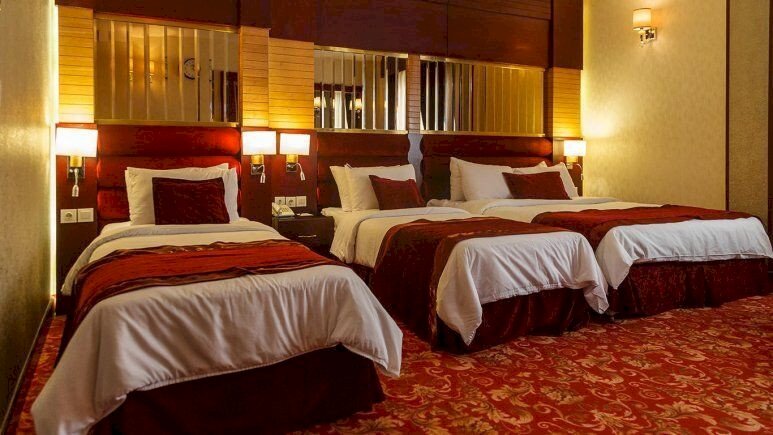Hotel occupancy rate in West Azarbaijan up 41%

TEHRAN – The bed occupancy rate of hotels and accommodation centers across northwestern West Azarbaijan province rose 41 percent during the first nine months of the current Iranian calendar year (March 21-December 21, 2021) compared to the same period of time in the past year.
Over 94,000 domestic tourists have stayed in the province during the mentioned time, Jalil Jabari said on Thursday.
In nine months, over 16,000 foreign travelers stayed in the province’s accommodation centers and it is estimated that 5,500 foreign tourists will stay in these units in the fourth quarter of the year, the official added.
The accommodation centers have generated over 40 job opportunities during the mentioned time as well, he noted.
Back in December, Jamshid Hamzehzadeh the head of the Iranian Hoteliers Association announced that following the planned measures, the occupancy rate of the country’s hotels, which had fallen below five percent because of the outbreak of the coronavirus, has reached 45 percent over the past three months.
Multiple problems, notably the pandemic, caused a severe impact on the tourism industry, the official explained.
Even before the coronavirus outbreak and in 2019, travel was reduced due to heavy rains and flooding across the country, and the hotel industry had to recoup nearly 100 percent of the costs paid for canceled hotel reservations, he added.
The Iranian hoteliers have lost 220 trillion rials (about $740 million) over the past two years, he noted.
However, some problems have been resolved and the hotels’ condition has improved, he mentioned.
Back in October, the official announced that Iranian hotels are ready to receive foreign tourists as the issuance of tourist visas and the flow of foreign tourists from land and air borders would be resumed.
Ninety percent of the hotel staff have been vaccinated against the coronavirus, so the hotels are ready to welcome foreign tourists, observing strict health protocols, he said.
The main destinations of foreign tourists in Iran are specifically cities such as Mashhad, Qom, Tabriz, Shiraz, Yazd, and Isfahan, and to return to the figure of over eight million incoming tourists before the outbreak of the coronavirus, serious planning is required, the official added.
Iraqi tourists will flood the country once the borders open, but attracting tourists from Europe will require some time, he noted.
However, he noted that two-thirds of the hotel staff have lost their jobs, he added.
Back in September, Hamzehzadeh announced that all employees of accommodation centers across Iran are scheduled to be vaccinated against the coronavirus.
“To vaccinate staffs of all accommodation centers, including eco-lodges, apartment hotels, and guest houses, as well as hotels, more coordination with the Ministry of Health is needed,” he added.
Back in July, ISNA reported that the tourism industry of the country has suffered a loss of some 320 trillion rials ($1.1 billion) since the outbreak of the coronavirus pandemic.
The pandemic has also ruined more than 44,000 jobs in a once budding travel sector of the country, the report added.
Experts believe accommodation centers suffered the most as a result of the outbreak of the coronavirus in Iran and its subsequent unemployment and financial losses.
Months of steep recession has taken its toll. Many travel insiders, hoteliers, and tour operators have faced big dilemmas such as bankruptcy, unemployment, debts, and the prospects of not being competitive on the international level.
Panels of travel experts have mapped out new marketing strategies hoping Iran’s tourism would get back on its feet once again. For instance, the Head of the Iranian Tour Operators Association has said the international tourist flow to Iran will return to normal until 2022.
West Azarbaijan embraces a variety of lush natural sceneries, cultural heritage sites, and museums including the UNESCO sites of Takht-e Soleyman and Qareh Klise (St. Thaddeus Monastery), Teppe Hasanlu, and the ruined Bastam Citadel.
The region was home to several ancient civilizations. According to Britannica, it was conquered by Alexander the Great in the 4th century BC and was named Atropatene after one of Alexander’s generals, Atropates, who established a small kingdom there. Ultimately, the area returned to the Persian (Iranian) rule under the Sasanians in the 3rd century CE.
ABU/
Leave a Comment